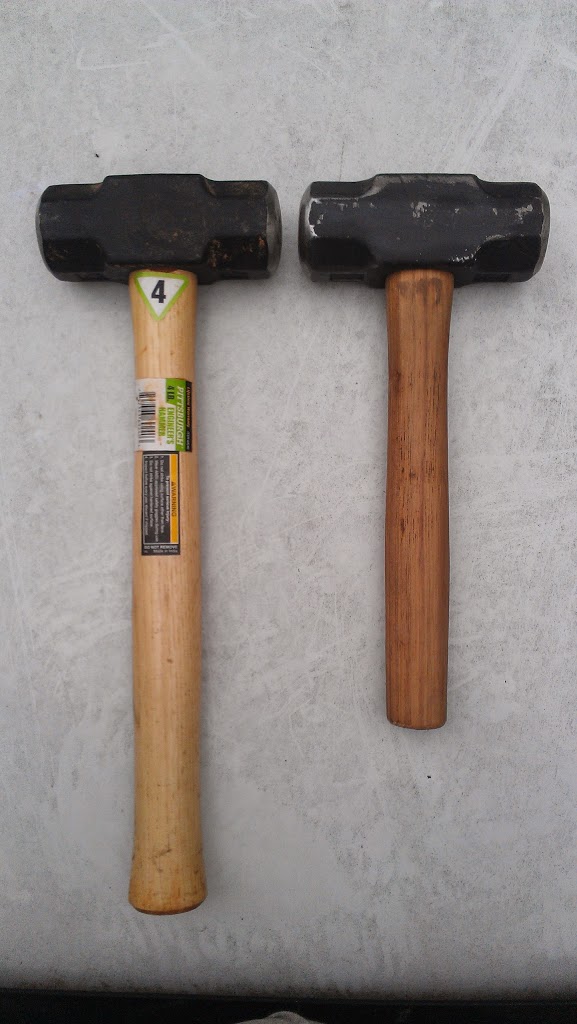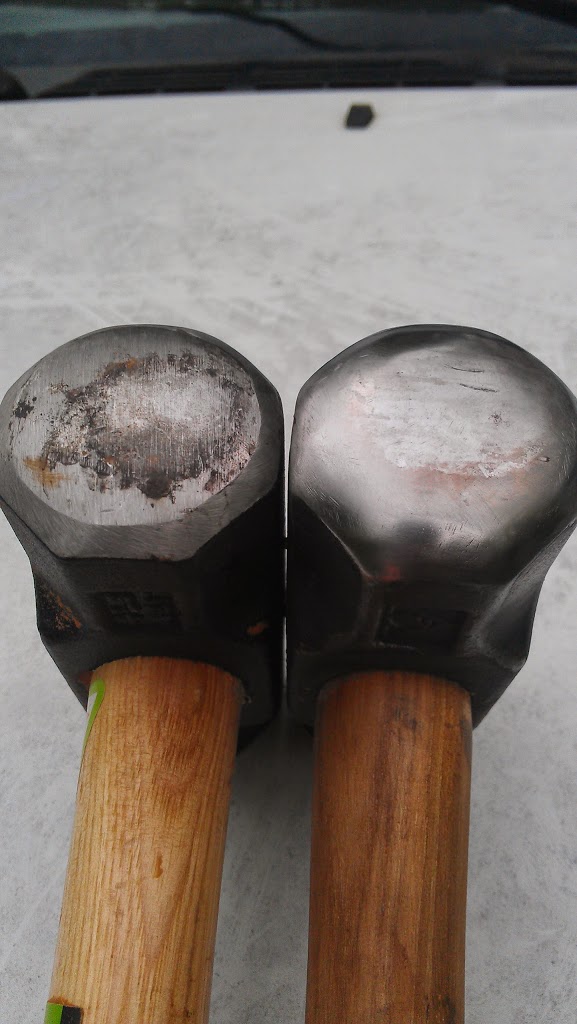A hammer is one of the essential tools of blacksmithing. There’s a wide variety of commercially-made, custom made, hand made, and modifiable hammers on the market. Most of the other smiths I’ve seen work are using relatively heavy hammers with a flat face and rounding face, al-la Brian Brazeal. Until I can get around to forging one I decided the best way to acquire one would be to modify a 4lb sledge hammer. It’s fairly easy to do, but it’ll require an angle grinder, file, and some fine sandpaper.
Here’s a “before and after” shot:
As you can see, I shortened and sanded the handle and rounded one face of the hammer. To round the face I used a cutting/grinding wheel in an angle grinder to bring the edges down and round them out, followed by a coarse sanding flap-disc to refine the shape, then a fine sanding flap-disc to smooth the surface. Finally I polished the face with some fine grit sandpaper (220 stepping up to 600 grit). The shape isn’t a half-sphere, it’s more like 1/5-1/6 of a sphere.
The main thing to watch for is to not overheat the metal. You don’t want to lose too much of the temper of the hammer face. Since these photos were taken I’ve refined the shape a bit more and flattened the other face by carefully grinding with an angle grinder followed by filing and sanding. A belt sander would have been easier but I didn’t have one handy.
This is a great way to get a hammer you like if you’re on a budget. I paid $10 for the hammer and spent an hour or so grinding and polishing. It works great.
I also have a lighter (2-2.5lb) cross pein hammer I picked up from a flea market, it was in pretty good shape. While I had the grinder out I sanded the dings out of the pein and face of the smaller hammer and wire brushed it before putting it on a nice new handle. An inexpensive wire brush that fits in a drill and a cheap grinder will let you clean up flea-market or garage sale finds easily.
One final tip – sand the varnish off the hammer handles. It’ll help prevent blisters and give you a solid grip. The oils in your skin will help maintain the wood, but if you are concerned you can wipe on a light coat of an oil based finish such as boiled linseed oil, just be sure to let it thoroughly cure before you use the hammer so it doesn’t slip out of your grip!


